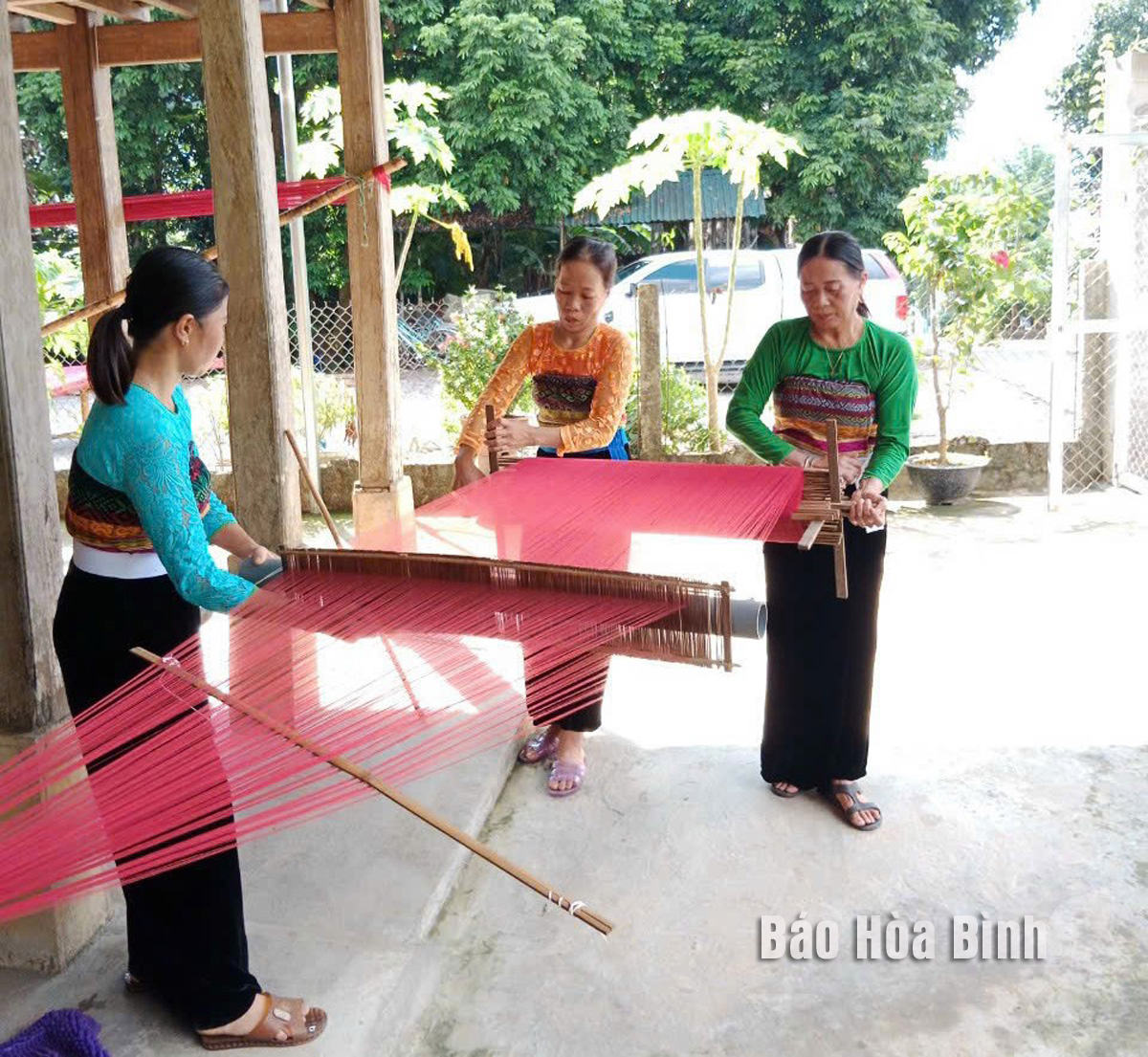



Chieng Chau brocade weaving and tourism service cooperative, Chieng Chau Commune (Mai Chau), creates jobs for ethnic minority women.
To revive the traditional weaving craft of the Thai ethnic group in Mai Chau district, with the support and collaboration of the Japan International Cooperation Agency (JICA), the Chieng Chau brocade weaving and tourism service cooperative was established in 2009. Since then, the cooperative has engaged in many creative and practical activities to preserve and develop the traditional weaving craft of the Thai people.
Vi Thi Oanh, deputy director of the cooperative, said that in recent years, cooperative members and local weaving households have continuously explored, innovated, and improved designs to enhance product quality, meet market demands, and cater to tourists. Its products have reached various regions across the country and even attracted orders from abroad. The cooperative has also contributed to improving livelihoods for dozens of ethnic minority women in the locality, providing them with stable incomes.
Currently, Hoa Binh has 11 craft villages recognised by the provincial People's Committee. Local authorities are focusing on reorganising these trade villages in accordance with legal regulations on planning, land use, and construction so as to ensure sufficient space for production, preserve the landscape, and integrate environmental protection with rural development. Efforts are also being made to build criteria, and assess and classify the activities of these craft villages in alignment with sustainable development goals, while building and digitising a database system, and developing craft villages that produce products with high economic values, high cultural content and significant export potential.
Through various measures, craft villages in the province have gradually been revived and developed, contributing to the preservation and promotion of the unique cultural values of local communities. Notable crafts include beekeeping, traditional weaving, bamboo and rattan weaving, stone and driftwood carving, ethnic cuisine, and processing of agricultural, forestry, and aquatic products. To date, the province has five craft villages with recognised OCOP (One Commune One Product) products and two with registered trademarks. Trade villages are offering jobs for 1,300 people, with an average income of 3-5 million VND (120-200 USD) per person per month.
At the end of May, the Hoa Binh Provincial Ethnic Arts Troupe organized a series of performances for residents in Region 2 and Region 3 communes across the province. Bringing art to ethnic communities in remote, isolated, and especially disadvantaged areas has become a meaningful activity. These are not merely artistic performances but also journeys to disseminate cultural values, enrich spiritual life, and contribute to preserving the cultural identity of ethnic minorities.